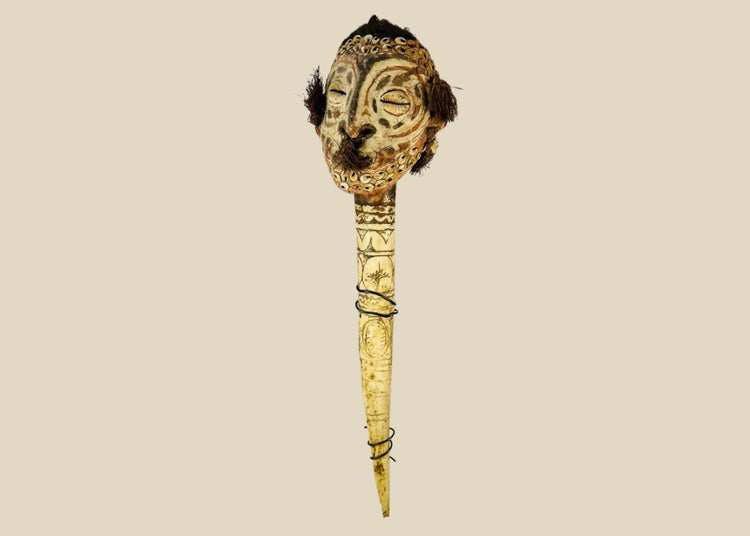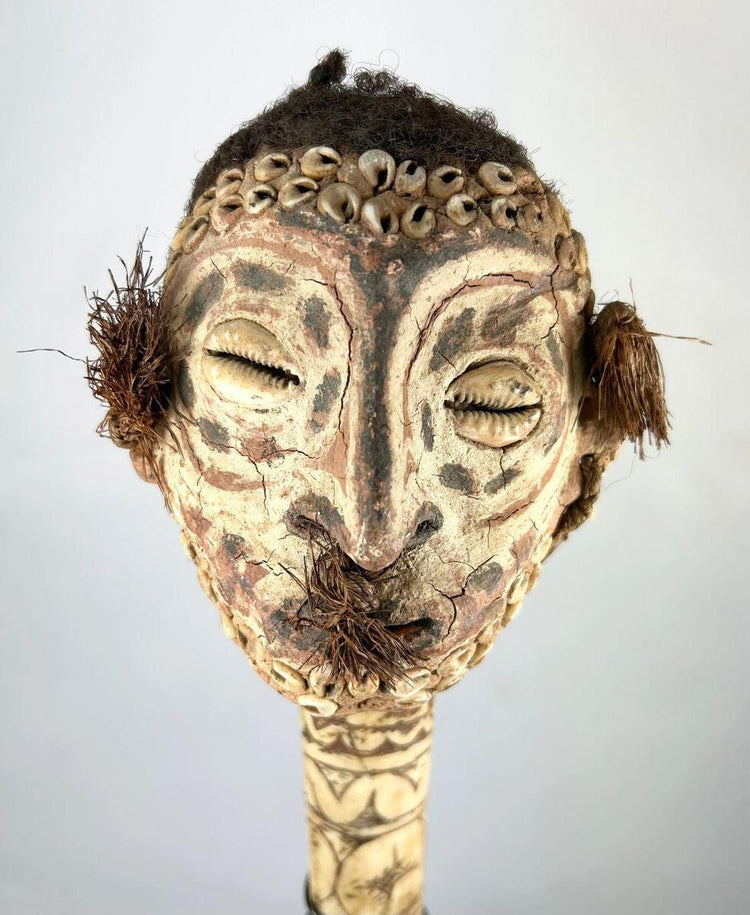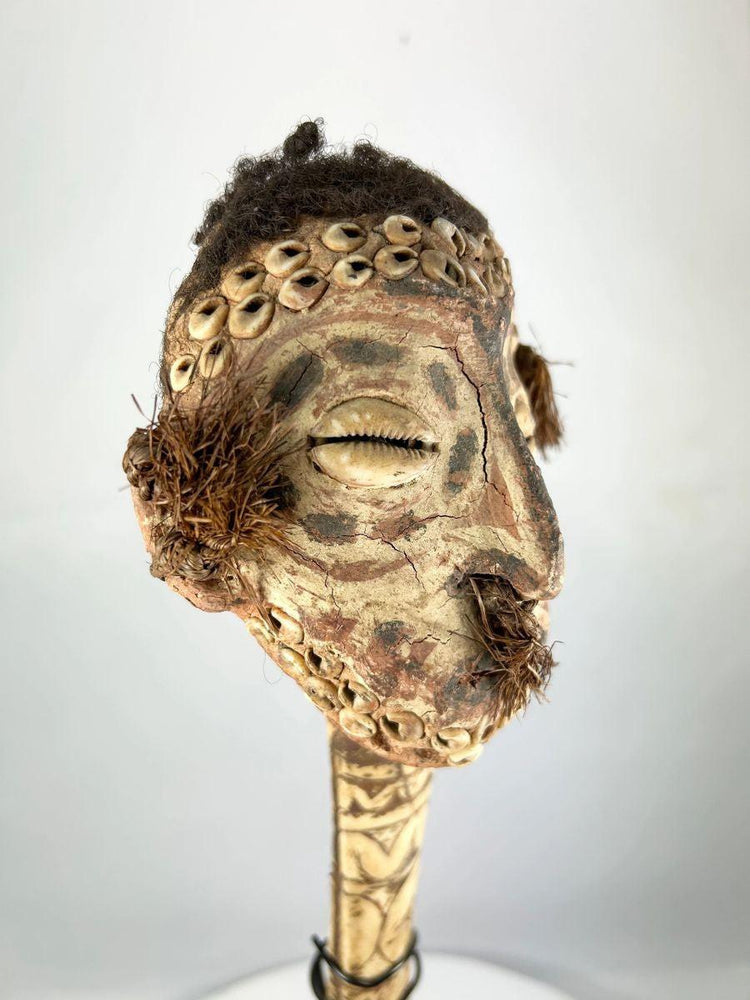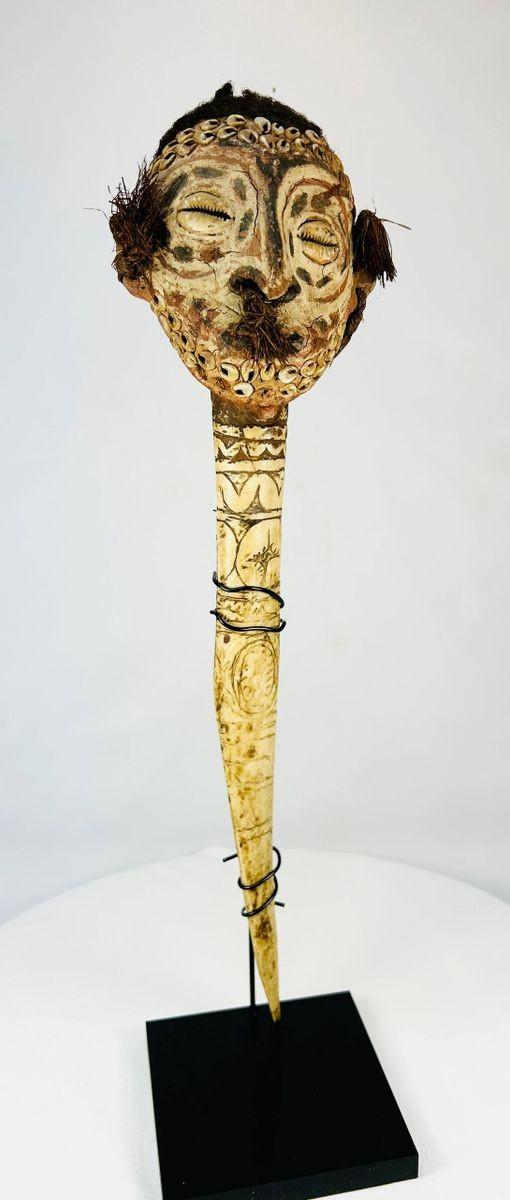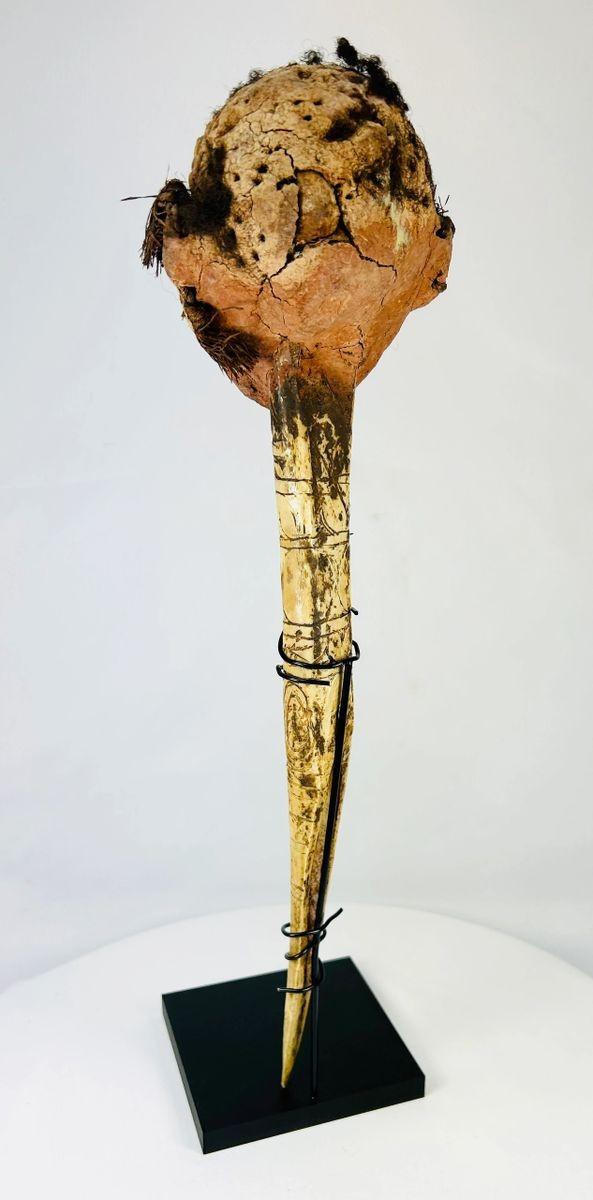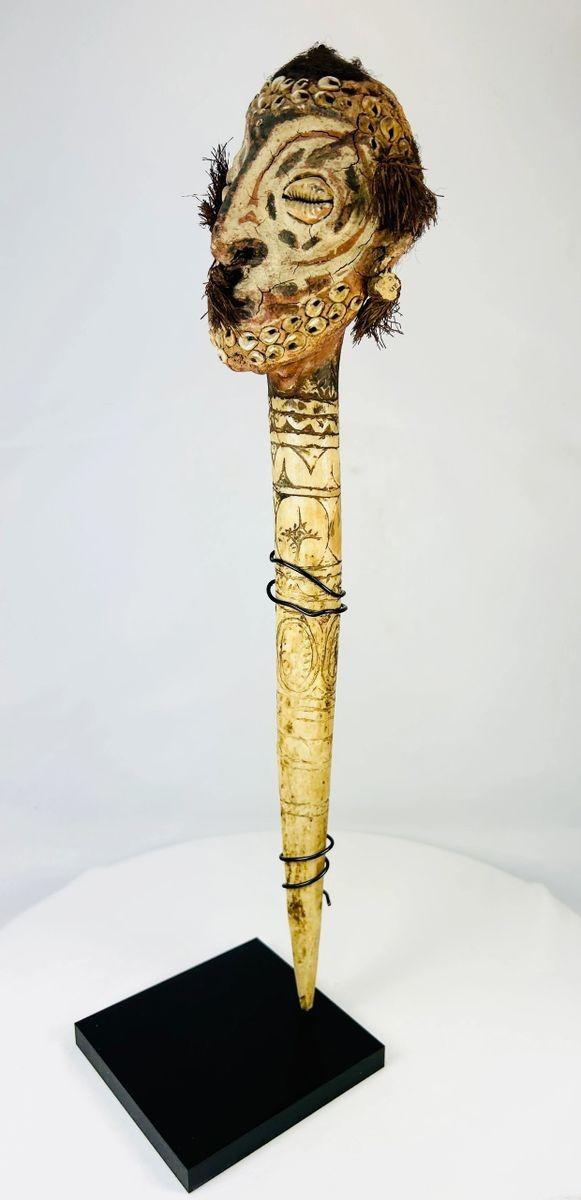Papua New Guinea | Ceremonial Bone Dagger | Tribal Artifact with Cowrie Shell & Hair | Circa 19th Century
Description
More
Less
Historical Context & Origin
Region: Sepik River, Papua New Guinea
Material: Bone with cowrie shell inlays, human hair, and carved decoration
Period: 19th Century CE
Description
This rare ceremonial dagger from the Sepik River region of Papua New Guinea embodies the deep spiritual traditions and artistic mastery of its people. Hand-carved from dense bone and adorned with cowrie shells, human hair, and intricate tribal motifs, the dagger served not only as a weapon but as a sacred object used in ceremonies and initiation rites. Its anthropomorphic head carving symbolizes ancestral spirits, connecting the bearer to lineage, protection, and tribal identity.
Features
- Carved anthropomorphic head representing ancestral spirits or deities
- Cowrie shell inlays symbolizing fertility, wealth, and spiritual connection
- Human hair adornment, signifying lineage and protective power
- Hand-carved geometric tribal motifs, reflecting ritualistic iconography
- Dense bone construction with aged surface patina confirming authenticity
Cultural Significance
Among the Sepik River tribes, ceremonial daggers were imbued with spiritual energy and ancestral presence. They were used in initiation rites, tribal rituals, and at times in combat, acting as a bridge between the physical and spiritual worlds. Human hair details and carved ancestral imagery made such objects rare and powerful, serving as tangible connections to heritage and tribal cosmology. This dagger reflects both the sacred role of ritual artifacts and the artistry of Sepik craftsmanship, considered among the most revered in Oceania.
Condition
The dagger is well-preserved with natural patina and minor wear consistent with age and ceremonial use. The carved details, cowrie shell inlays, and hair adornment remain intact, affirming its rarity and cultural importance.
Dimensions (approximate)
Length: 14 in
Age
19th Century CE
Learn More
Explore more ritual objects and cultural artifacts in our Ethnographic Relics: Cultural Artifacts Collection.
Read from Our Blog: Papua New Guinea Ceremonial Bone Dagger – A Tribal Masterpiece
Learn about the craftsmanship and meaning behind Sepik bone daggers in New Guinea Bone Daggers: Culture & Craft.
See a museum example of similar ceremonial weapons in Iatmul Dagger – Sepik River Ritual Art.
Description
Historical Context & Origin
Region: Sepik River, Papua New Guinea
Material: Bone with cowrie shell inlays, human hair, and carved decoration
Period: 19th Century CE
Description
This rare ceremonial dagger from the Sepik River region of Papua New Guinea embodies the deep spiritual traditions and artistic mastery of its people. Hand-carved from dense bone and adorned with cowrie shells, human hair, and intricate tribal motifs, the dagger served not only as a weapon but as a sacred object used in ceremonies and initiation rites. Its anthropomorphic head carving symbolizes ancestral spirits, connecting the bearer to lineage, protection, and tribal identity.
Features
- Carved anthropomorphic head representing ancestral spirits or deities
- Cowrie shell inlays symbolizing fertility, wealth, and spiritual connection
- Human hair adornment, signifying lineage and protective power
- Hand-carved geometric tribal motifs, reflecting ritualistic iconography
- Dense bone construction with aged surface patina confirming authenticity
Cultural Significance
Among the Sepik River tribes, ceremonial daggers were imbued with spiritual energy and ancestral presence. They were used in initiation rites, tribal rituals, and at times in combat, acting as a bridge between the physical and spiritual worlds. Human hair details and carved ancestral imagery made such objects rare and powerful, serving as tangible connections to heritage and tribal cosmology. This dagger reflects both the sacred role of ritual artifacts and the artistry of Sepik craftsmanship, considered among the most revered in Oceania.
Condition
The dagger is well-preserved with natural patina and minor wear consistent with age and ceremonial use. The carved details, cowrie shell inlays, and hair adornment remain intact, affirming its rarity and cultural importance.
Dimensions (approximate)
Length: 14 in
Age
19th Century CE
Learn More
Explore more ritual objects and cultural artifacts in our Ethnographic Relics: Cultural Artifacts Collection.
Read from Our Blog: Papua New Guinea Ceremonial Bone Dagger – A Tribal Masterpiece
Learn about the craftsmanship and meaning behind Sepik bone daggers in New Guinea Bone Daggers: Culture & Craft.
See a museum example of similar ceremonial weapons in Iatmul Dagger – Sepik River Ritual Art.
You May Also Like
























